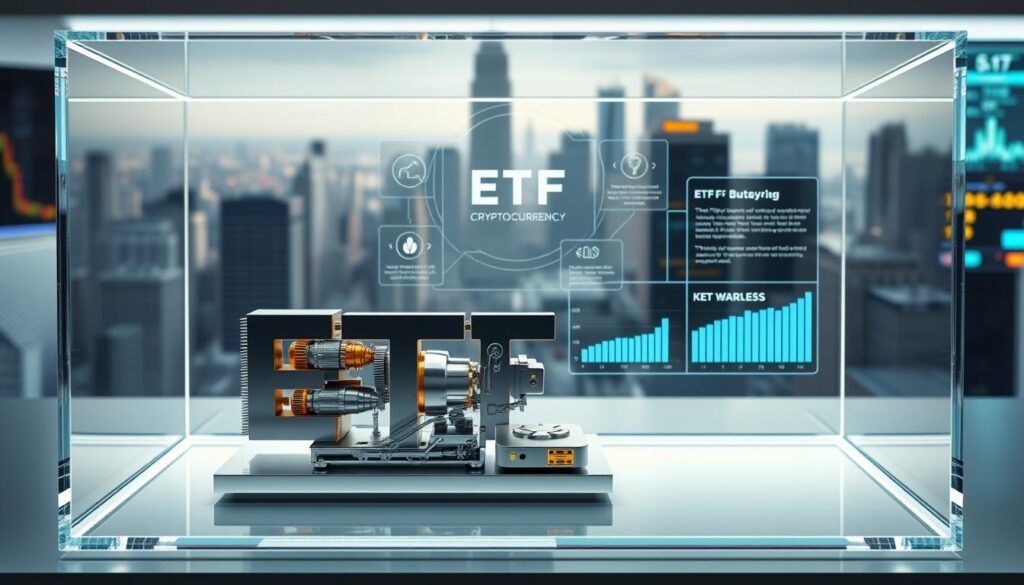Now Reading: Best Cryptocurrency to Invest in 2026 for Beginners: Top Picks
- 01
Best Cryptocurrency to Invest in 2026 for Beginners: Top Picks
Best Cryptocurrency to Invest in 2026 for Beginners: Top Picks

Quick context: Institutional capital is rising and regulators are engaging more with digital assets. Large names show greater stability, and that shift makes the crypto market more accessible for new investors.
The goal of this article is simple: set clear expectations and point you toward options that balance upside with risk controls. You will get concise research, practical information on wallets and fees, and notes on price behavior that matter when allocating funds.
We combine established leaders with select early-stage opportunities and explain how diversification can smooth returns while leaving room for outperformance. Follow the linked guide for beginner strategies and custody basics: crypto investment strategies.
Next: a clear roadmap walks from market context to curated picks and step-by-step actions for U.S. investors.
Why 2026 Could Be Big for Crypto Beginners: Market Context and Growth Drivers
2026 may mark a turning point as structural forces reshape crypto markets.
Institutional flows and improved infrastructure are reducing the old link between halving events and sudden rallies. Bitwise CIO Matt Hougan and CryptoQuant CEO Ki Young Ju note that larger, steady capital and better market plumbing can change how price reacts to discrete events.
Improving regulatory clarity and ETF participation can deepen order books and cut extreme swings. That shift helps bitcoin ethereum leadership transmit more smoothly to other networks and supports healthier liquidity on major venues.
- Shift from hype cycles toward fundamentals such as product‑market fit and real usage.
- Growth driven by enterprise integrations, smart contracts, and cross‑chain infrastructure.
- Institutional custody and analytics improve the quality of information available to investors.
For new entrants, focus on liquidity, platform security, and active developer community. Pay attention to fees, throughput, and downtime risk across assets. These practical checks often matter more than headlines when markets mature.

Best cryptocurrency to invest in 2026 for beginners
Start with a simple allocation: anchor your portfolio in long‑standing networks and add a small, higher‑risk slice of early-stage tokens. This mix balances liquidity and potential gains while keeping downside manageable.
Core holdings should be platforms with deep liquidity, wide exchange support, and active developer communities. Examples include large-cap leaders that have shown multi‑year appreciation and expanding utility.
Use a measured satellite allocation for smaller coins and tokens. Limit exposure by setting clear percent ranges and defining how much volatility you can tolerate.

- Compare price history and risk: review volatility, drawdowns, and liquidity before adding positions.
- Do focused research: check team track records, public code, audits, and community traction.
- Mind total costs: trading spreads, custody choices, and tax rules affect net gains.
Reassess allocations periodically as fundamentals evolve. The goal is a repeatable thesis you can follow without chasing headlines across the market.
Core long-term coins for first-time investors seeking stability and growth
Select a handful of proven networks that mix store-of-value traits with active developer activity and clear utility. Below are four widely held assets that serve distinct roles in a balanced allocation.
Bitcoin (BTC): Digital gold, fixed supply, growing institutional adoption
Bitcoin has a capped supply of 21 million and a clear store‑of‑value narrative. Mid‑September 2025 price levels near $115,000–$116,000 reflect long-term growth and broad institutional demand.
Ethereum (ETH): Smart contracts, rollups, and the largest developer ecosystem
Ethereum launched in 2015 and now runs proof‑of‑stake with an active rollup roadmap. Its smart contracts support the largest developer community, making it a focal platform for dApps and contracts‑based innovation.

Solana (SOL): High-speed smart contracts, sub-second finality, low fees
Solana debuted in 2020 with sub‑second block times and minimal fees. That performance profile supports fast consumer apps and may drive future growth as on‑chain activity scales.
BNB (BNB Chain): Exchange utility, staking, burns, and expansive ecosystem
BNB began at roughly $0.15 and later traded near $925–$935, backed by exchange utility, staking incentives, and periodic burns. BNB Chain offers multichain tools that expand developer and user integrations.
- Roles: bitcoin acts as a macro hedge, Ethereum and Solana provide smart contracts exposure, and BNB adds exchange and multichain utility.
- Signals: watch developer momentum, on‑chain activity, and tokenomics like supply caps or burn programs.
- Risk: historical returns were large, but price can stay volatile; use disciplined sizing and a long horizon.
High-upside opportunities: New projects, presales, and emerging narratives
High-upside presales attract attention when a project pairs strong tech with active community backing.
Bitcoin Hyper ($HYPER) brings a Solana virtual machine to Bitcoin via a Layer 2 design. It uses ZK-rollups and a trustless canonical bridge to enable DeFi, NFTs, and Web3 apps on Bitcoin’s security layer. The $HYPER presale has topped $7.3M with hefty daily inflows, but execution risk at this stage is real.
Maxi Doge ($MAXI) is a Dogecoin-themed meme coin with staking rewards and community giveaways. Its presale raised over $400k in about a week, showing how meme narratives can drive fast growth and volatile price moves.

TOKEN6900 ($T6900) mirrors viral memetic wins and has roughly $1.6M in presale backing. Scrutinize supply mechanics and real utility before sizing a position.
Snorter is a Solana trading tool with low fees, private RPC, MEV protection, rug detection and plans for EVM expansion. Its presale near $2.4M highlights demand for trading infrastructure, though roadmap delivery will shape long-term growth.
- Check audits and roadmap milestones.
- Diversify presale exposure.
- Track listing plans, liquidity, and fees post-launch.
How beginners can start: Exchanges, wallets, fees, and risk management
Start your crypto journey by focusing on practical steps that protect capital and simplify trading. This short roadmap covers platform choice, custody, cost control, and basic risk rules for U.S. investors.
Choose a reputable exchange
Pick regulated, liquid exchanges with clear fee schedules, strong security, and responsive support. Check custody options, withdrawal limits, and compliance with U.S. rules before you trade.
Secure your assets
Move long-term holdings to non-custodial wallets where you control keys. Consider a hardware wallet for cold storage and enable two‑factor authentication on accounts.
Learn governance and staking mechanics on networks you hold. Understand lock‑up terms, slashing risks, and tax implications before committing tokens to a validator.
Reduce costs and stress
Model trading fees, network gas, spreads, and withdrawal charges before executing. Use dollar‑cost averaging to smooth entries and avoid timing the market.
- Diversify across coins and tokens to limit single‑project exposure.
- Verify smart contracts when using DeFi—check addresses and audits.
- Document transactions for taxes and use trackers to monitor performance.
Conclusion
A practical roadmap ties core holdings and selective stage exposure to rules you can follow.
Balance matters. Anchor positions in resilient networks like bitcoin and BNB Chain and keep a small, defined range for presale or early-stage tokens.
Expect regulatory clarity and deeper liquidity to temper sharp swings in the crypto market. Set allocation limits, model fees and tax impacts, and rebalance on a schedule instead of chasing short-term price signals.
When considering a presale or project such as bitcoin hyper, verify audits, contracts, and roadmaps. Treat meme coin narratives as high-risk trades and size positions accordingly.
Stick to process, watch community and infrastructure progress, and measure gains against clear criteria. That approach helps U.S. investors navigate launches and changing market conditions with discipline.
FAQ
What core assets should a first-time crypto investor consider?
Core holdings often include Bitcoin (BTC) for store-of-value exposure and Ethereum (ETH) for smart contract activity. Many beginners also look at Solana (SOL) and BNB (BNB Chain) for lower fees and active ecosystems. Prioritize liquidity, developer activity, and security when choosing assets.
How can I evaluate a new project or token safely?
Check the team’s track record, on-chain activity, audited smart contracts, tokenomics, and roadmap. Look for a clear use case, community engagement, and reputable audit reports. Avoid projects that lack transparency or promise guaranteed returns.
Are meme tokens worth considering, and what risks do they carry?
Meme coins like Dogecoin-style projects can surge quickly but also collapse without warning. They often depend on social momentum rather than fundamentals. If you allocate capital, limit exposure, use strong risk management, and expect high volatility.
What role do exchanges and wallets play for newcomers?
Choose a regulated, high-liquidity exchange for fiat on-ramps and large trades. For long-term holding or staking, use a non-custodial wallet (hardware or trusted software) to retain private keys. Always enable two-factor authentication and withdraw assets off exchanges when possible.
How do fees and network congestion affect returns?
High transaction fees and congestion can eat into gains, especially for frequent traders. Layer-2 solutions, rollups, and alternative chains like Solana or BNB Chain often offer lower fees. Monitor gas costs and use batching or timing strategies to reduce expense.
What is staking and how can beginners use it?
Staking locks tokens to support network security and consensus in exchange for rewards. It can generate passive yield but comes with lock-up periods and validator risk. Use reputable platforms or run your own node only after researching validator performance and slashing policies.
How important is regulatory clarity when choosing assets or platforms?
Regulatory clarity reduces the risk of listings getting delisted or platforms facing enforcement. U.S. investors should prefer exchanges and products that comply with SEC and FINRA guidelines. Track legal developments around ETFs, securities law, and taxation.
What is a trustless bridge and why does it matter?
A trustless bridge moves assets across blockchains without a centralized custodian, using smart contracts or cryptographic proofs. It increases composability and liquidity across ecosystems but still carries smart-contract and bridge-specific risks. Verify audits and bridge activity before use.
Should I participate in presales or early rounds of new tokens?
Presales can offer early discounts but often carry high project and liquidity risk. Do thorough due diligence, confirm token lockups and vesting schedules, and avoid allocating funds you cannot afford to lose. Prefer presales with reputable backers and clear utility.
How can I protect against scams, rug pulls, and MEV extraction?
Use audited contracts, reputable DEXs and aggregators, and front-running protection tools. Check liquidity lock status, contract ownership renouncement, and active community oversight. Tools and bots that detect rug patterns or offer MEV protection can help, but none are foolproof.
What role do layer‑2s and rollups play in reducing costs and improving UX?
Layer-2 networks and ZK/Optimistic rollups batch transactions off-chain to lower gas fees and speed up finality. They make smaller transfers and dApp interactions more affordable. Evaluate security assumptions (fraud proofs, finality periods) before bridging funds.
How should I build a diversified crypto allocation with limited capital?
Use a core-satellite approach: allocate a larger portion to established coins (BTC, ETH) and a smaller share to higher-upside tokens or selective memetics. Dollar-cost averaging (DCA) helps reduce timing risk. Keep allocations aligned with risk tolerance and investment horizon.
What metrics matter when tracking project health and growth?
Monitor active addresses, developer commits, TVL (total value locked), staking participation, on-chain transactions, and token distribution. Community engagement and listing activity on major exchanges also signal adoption and liquidity.
How do governance tokens affect investor influence and project direction?
Governance tokens grant voting rights on protocol changes, funding, and upgrades. Holding such tokens can let users influence development, but voting power often concentrates with large holders. Assess governance models and token-holder protections before participating.
Can institutional products like ETFs impact price and accessibility?
Yes. Spot ETFs and institutional-friendly products increase liquidity and attract capital, which can support higher prices and lower volatility over time. They also make exposure simpler for mainstream investors but may introduce new regulatory oversight.















